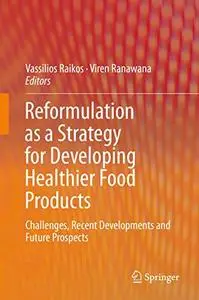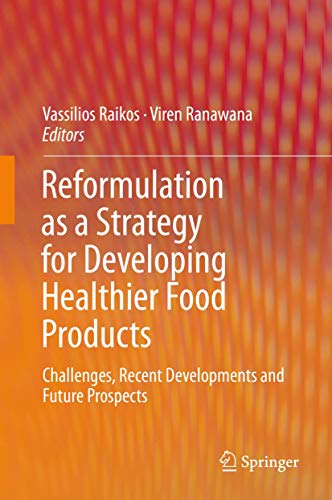Reformulation as a Strategy for Developing Healthier Food Products: Challenges, Recent Developments and Future Prospects by Vassilios Raikos
English | PDF | 2019 | 318 Pages | ISBN : 303023620X | 5.2 MB
This work introduces the concept of reformulation, a relatively new strategy to develop foods with beneficial properties. Food reformulation by definition is the act of re-designing an existing, often popular, processed food product with the primary objective of making it healthier. In recent years the concept of food reformulation has evolved significantly as additional benefits of re-designing food have become apparent.
In addition to targeting specific food ingredients that are considered potentially harmful for human health, food reformulation can also be effectively used as a strategy to make foods more nutritious by introducing essential macro- /micro-nutrients or phytochemicals in the diet. Reformulating foods can also improve sustainability by introducing “waste” (and underutilized) ingredients into the food chain. In light of these developments, reformulating existing foods is now considered a realistic and attractive opportunity to provide healthy, nutritious, and sustainable food choices to the consumers and likewise improve public health. Indeed reformulation has now become essential in many cases for redressing the health properties of foods that are popularly consumed and significantly affecting public health.
This edited volume covers aspects of food reformulation from various angles, exploring the role of the food industry, academia, and consumers in developing new products. Some of the major themes contributors address include methods of reformulating food products for health, improving the nutritional composition of foods, and challenges to the food industry, including regulation as well as consumer perception of new products. The book presents several case studies to clarify these objectives and illustrate the difficulties encountered in the process of developing a reformulated product. Chapters from experts in the field identify emerging and future trends in food product development, and highlight ways in which these efforts will help with increasing food security, improving nutrition and health, and promoting sustainable production.
The editors have designed the book to be useful for both industry professionals and the research community. This interdisciplinary approach incorporates a wide spectrum of food sciences (including composition, engineering, and chemistry) as well as nutrition and public health. Food and nutrition professionals, policy makers, health care and social scientists, and graduate students will also find the information relevant.



